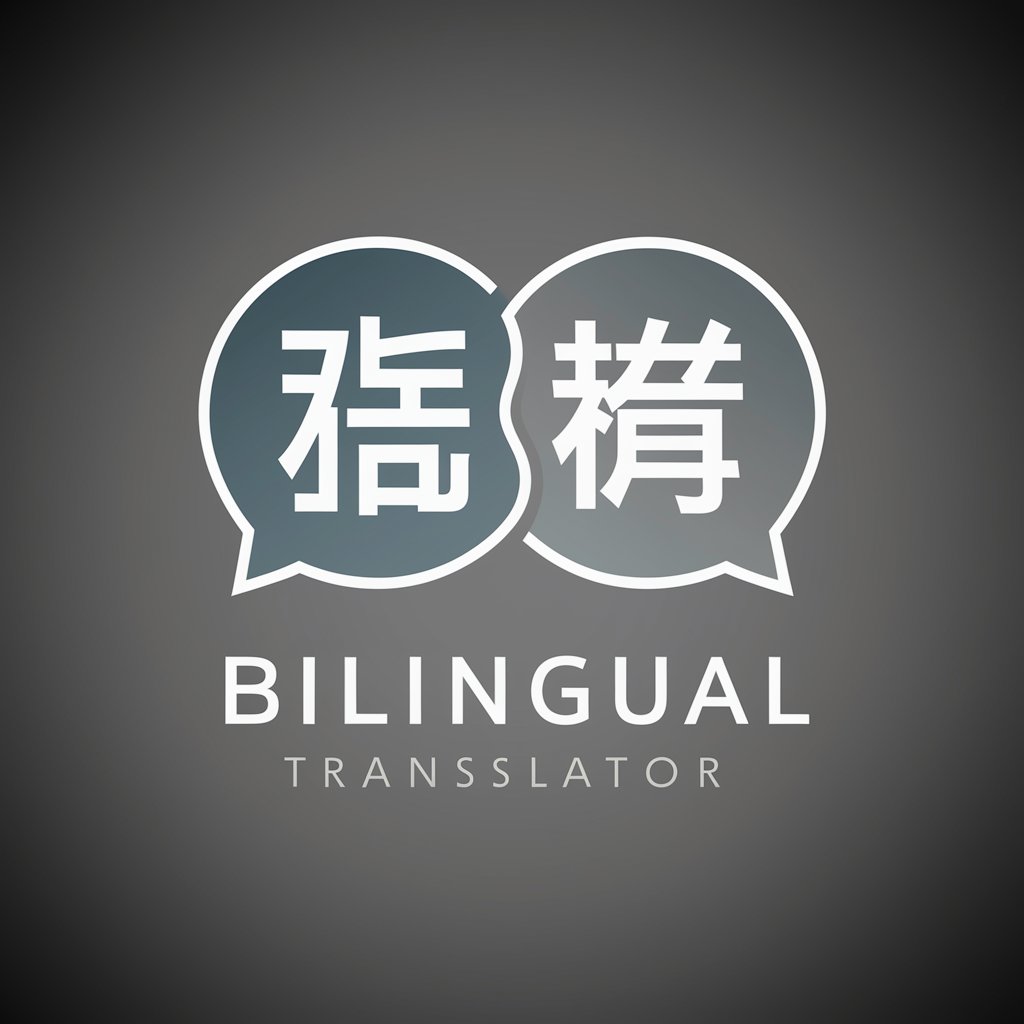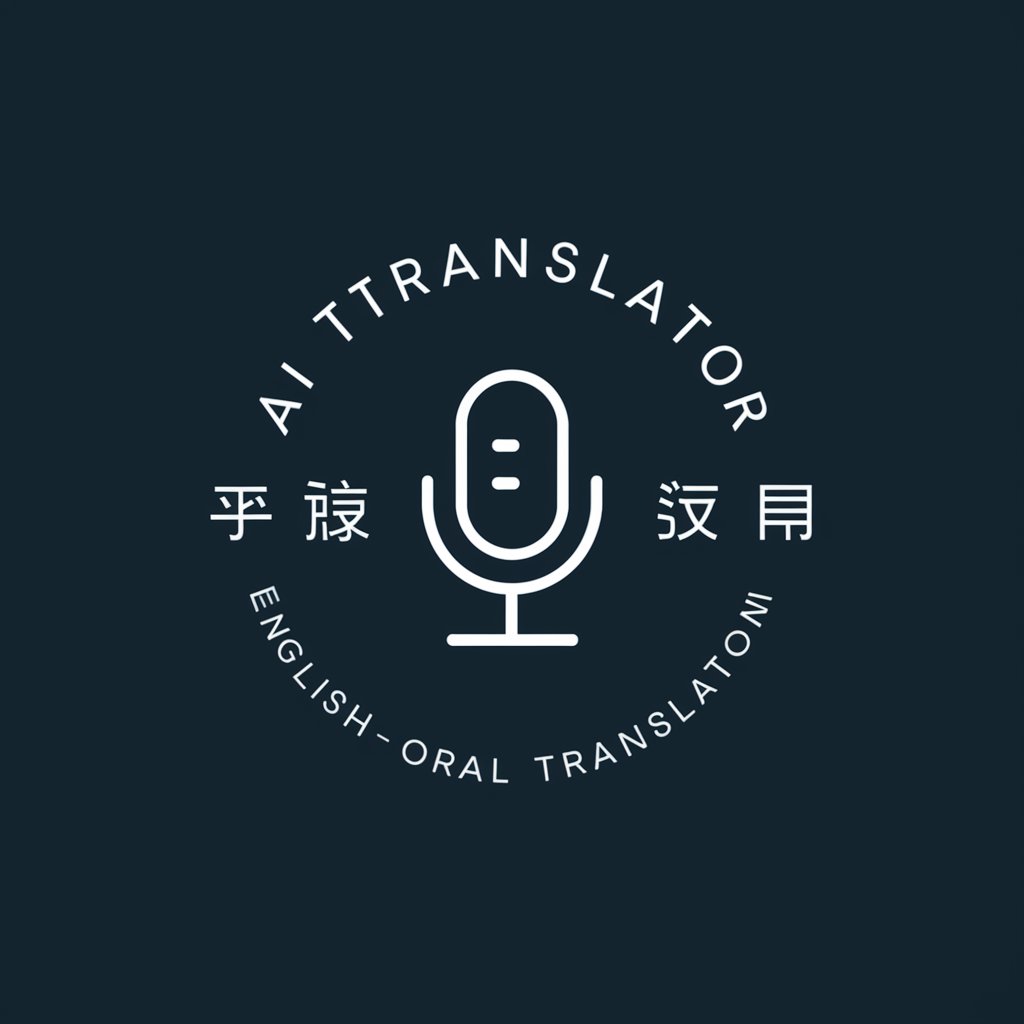
双向口语翻译 - real-time bilingual translation

Welcome to 双向口语翻译! Let's start translating.
Breaking Language Barriers with AI
Translate the following English text into Chinese:
Please convert this Chinese paragraph into English:
How would you say this in Chinese:
Could you translate this sentence into English:
Get Embed Code
Overview of 双向口语翻译
双向口语翻译 is a specialized service designed to provide real-time, bidirectional spoken language translation between two languages. This service is tailored to facilitate seamless communication in situations where participants do not share a common language. It interprets spoken input from one language and delivers the translation in another language almost instantaneously, preserving the original tone and context. A typical scenario might involve a business meeting between an English-speaking executive and a Mandarin-speaking partner, where 双向口语翻译 ensures each party understands the other accurately and clearly. Powered by ChatGPT-4o。

Core Functions of 双向口语翻译
Real-time Translation
Example
During an international conference, 双向口语翻译 translates a German speaker’s presentation into Japanese for the benefit of Japanese attendees.
Scenario
This function is crucial in live events where speakers and audiences come from different linguistic backgrounds, ensuring that all participants can engage with the content in real time without language barriers.
Cultural Nuance Preservation
Example
In a negotiation between Italian and Russian businessmen, 双向口语翻译 handles idiomatic expressions peculiar to Italian in a way that the Russian counterpart can comprehend without losing the intended emphasis or subtlety.
Scenario
This is important in high-stakes business or diplomatic interactions, where understanding cultural nuances can influence the outcome of discussions.
Target Users of 双向口语翻译
International Business Professionals
These users often engage in negotiations, meetings, and collaborations with partners who speak different languages. 双向口语翻译 enables them to communicate effectively, ensuring that no language barriers hinder their business processes.
Academics and Researchers
For academics and researchers attending international conferences or collaborating on projects with international colleagues, 双向口语翻译 facilitates clear communication, allowing them to share and gain insights irrespective of language differences.

How to Use 双向口语翻译
Step 1
Visit yeschat.ai for a free trial without login, also no need for ChatGPT Plus.
Step 2
Select the language pair you want to work with from the available options to ensure the tool is set up for your specific translation needs.
Step 3
Type or speak the phrase you want translated. The AI will automatically recognize the input language and provide the translation in the target language.
Step 4
Review the translation for accuracy and use the feedback option to correct any errors, helping the AI learn and improve over time.
Step 5
Utilize the tool in real-time conversations to facilitate bilingual communication, or use it to practice and enhance your language skills.
Try other advanced and practical GPTs
Acting entrep
Master Your Material, Ace Your Exams

GPT Asistente de Viajes
AI-powered smart travel planner

Flutter Pro
Empowering Flutter Development with AI

Jardinier d'un Verger Canadien
AI-driven gardening help for plant lovers.

Kontrola pravopisu
Enhance your Czech writing with AI.

BestDelegate (MUN)
AI-powered MUN speech builder for impactful debates.

Creator Miniaturas
AI-powered YouTube Thumbnail Creation.

Resumen de Libros
Unlock Insights with AI Summaries

Viral Bot
Craft Captivating Video Content Instantly

Python & Gurobi Master
Empowering optimization with AI

Ricercatore Analitico
Deep Insights with AI Precision

Marketing Matematico IA
Quantify Your Marketing Strategy

FAQs about 双向口语翻译
What is 双向口语翻译 and how does it work?
双向口语翻译 is a bilingual translation tool designed to instantly translate spoken or typed phrases between two languages. It uses advanced AI algorithms to understand and process natural language, providing accurate translations in real-time.
Can 双向口语翻译 handle different dialects and accents?
Yes, it can handle a variety of dialects and accents within the supported languages. The AI technology is trained on diverse linguistic data, enabling it to understand and accurately translate regional variations.
What makes 双向口语翻译 unique compared to other translation tools?
What sets it apart is its real-time, bilateral translation capability, making it ideal for live conversations. It also offers enhanced learning algorithms that improve its accuracy based on user feedback.
Is 双向口语翻译 suitable for professional use?
Yes, it is well-suited for professional settings where accurate, real-time translation is needed, such as conferences, business meetings, and customer support interactions.
How secure is the data input into 双向口语翻译?
The tool ensures high levels of data security, using encryption for all communications and not storing personal information unless explicitly required for functionality.





